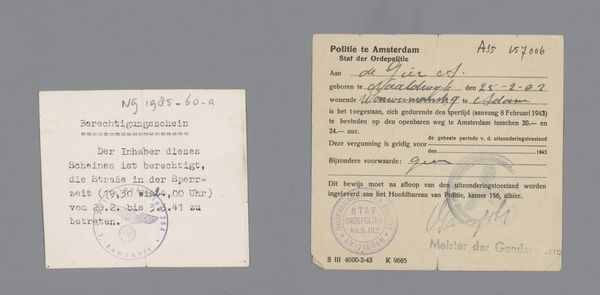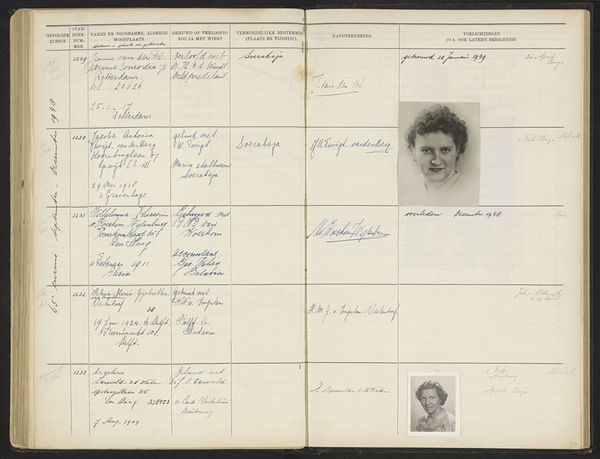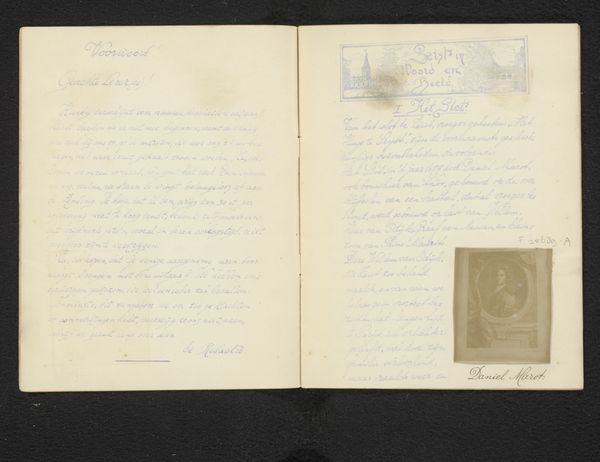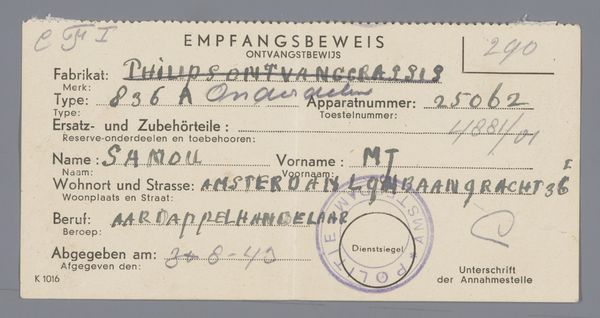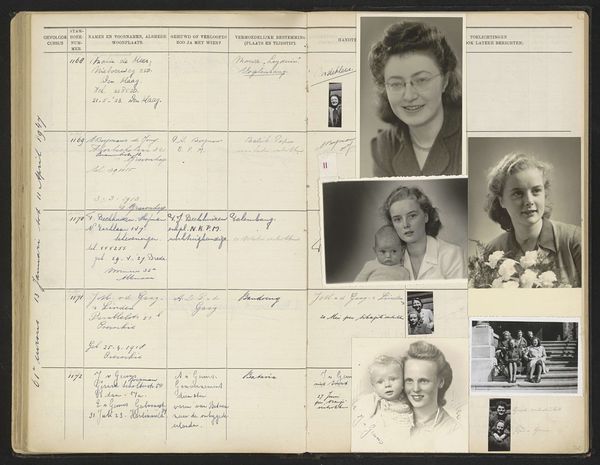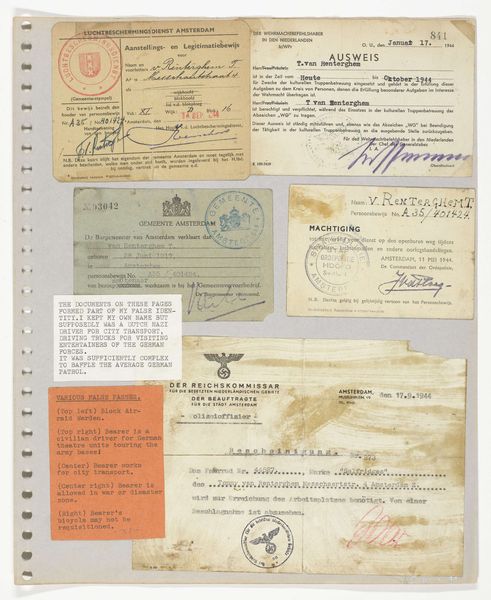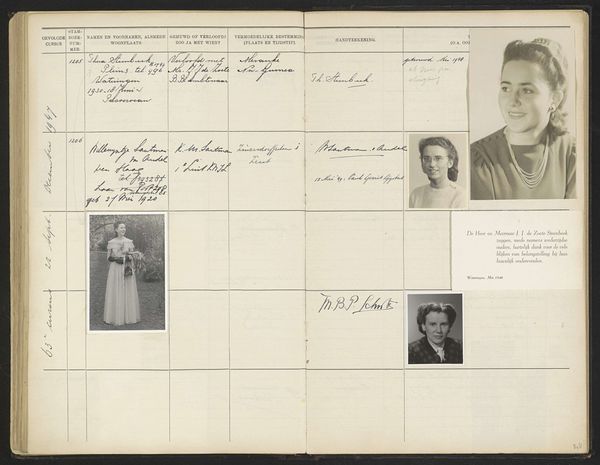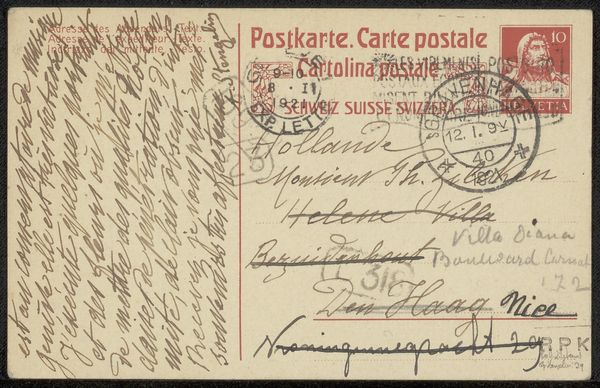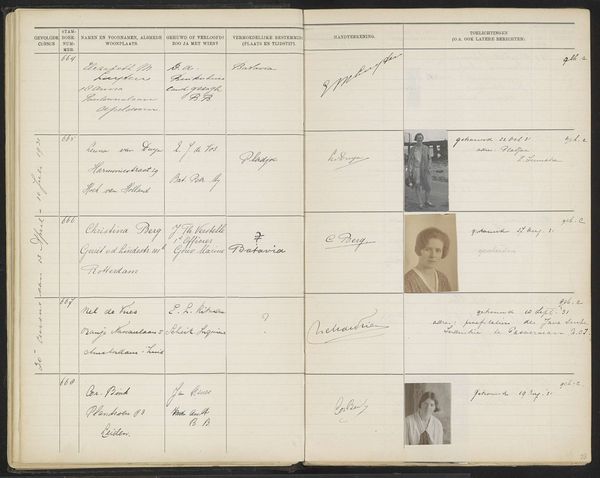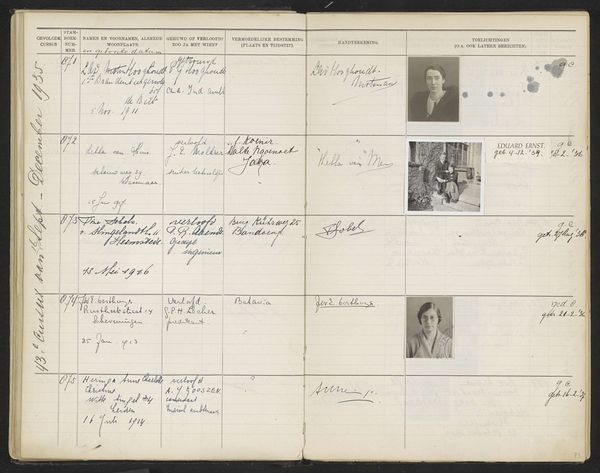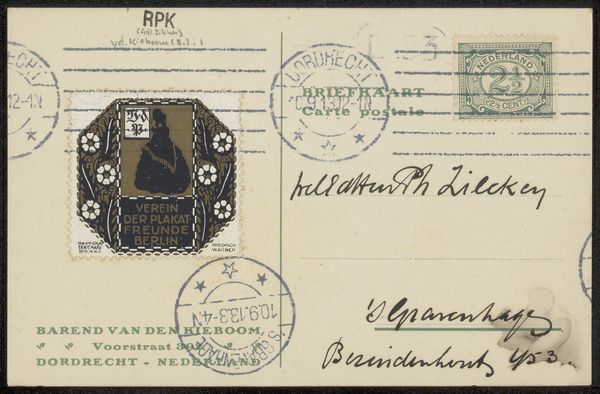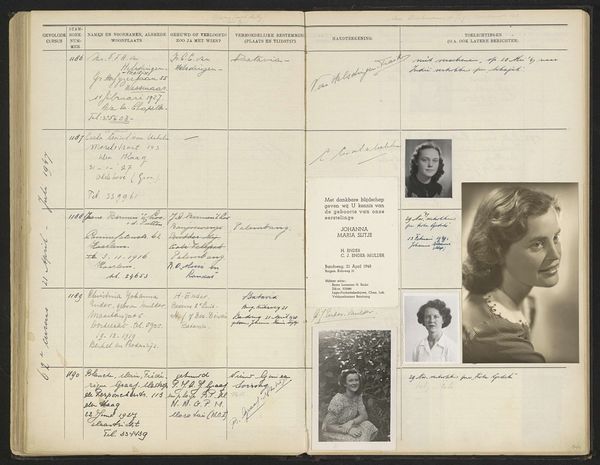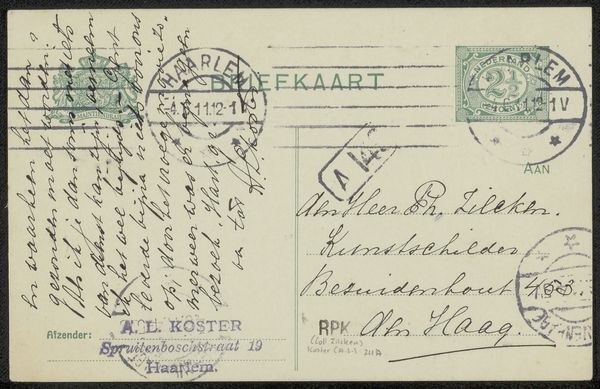
Dimensions: height 137 mm, width 99 mm
Copyright: Rijks Museum: Open Domain
Editor: Here we have "Passport of Wilhelmina Gerarda Hoogendijk," created in 1946. It's a photographic work, an open passport really, and something about the stamps and handwritten details gives it such a unique, tactile feeling. What do you notice about this piece? Curator: What interests me is the passport as a *made* object. It's not just an image; it’s a document created through very specific, bureaucratized processes. The photograph itself, that small portrait, represents a specific transaction – a sitting, the development, printing... All requiring material inputs, photographic paper, chemicals, and labour. Editor: So you see it less as a personal record and more as a product of a system? Curator: Exactly. Consider the passport's purpose: it regulates movement, it defines and limits access, all within a specific political and economic framework. The very materials used to construct the passport reflect a society's resources and its power to control its borders. Editor: That's interesting. I hadn't thought about the materiality implying a larger social structure. Curator: Look at the handwriting, the stamps. Each mark signifies a physical act of inscription and validation within the larger machinery of the state. Who handled this document? What kind of labour went into producing and authenticating it? It forces us to consider not just the image, but the material processes behind identity construction. Editor: It is strange to think about all the invisible processes happening to create the photograph we see! I hadn't thought about the human labor behind this portrait, beyond the subject herself, Wilhelmina. Thanks, this perspective really broadened my understanding. Curator: Mine as well! Considering the means of production truly helps decode the broader contexts of any work of art, even one as seemingly simple as this.
Comments
No comments
Be the first to comment and join the conversation on the ultimate creative platform.
